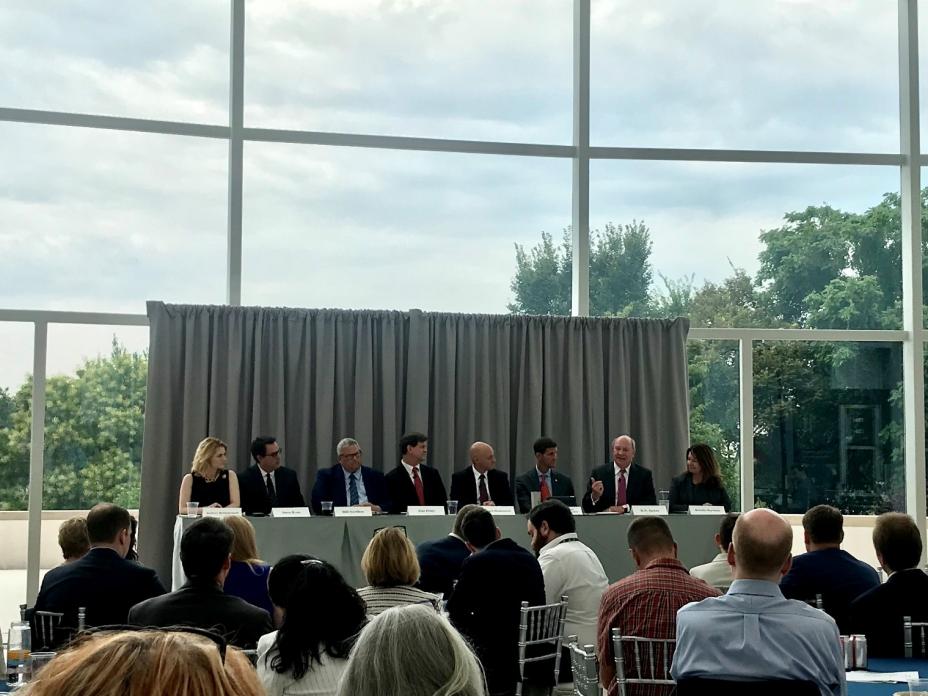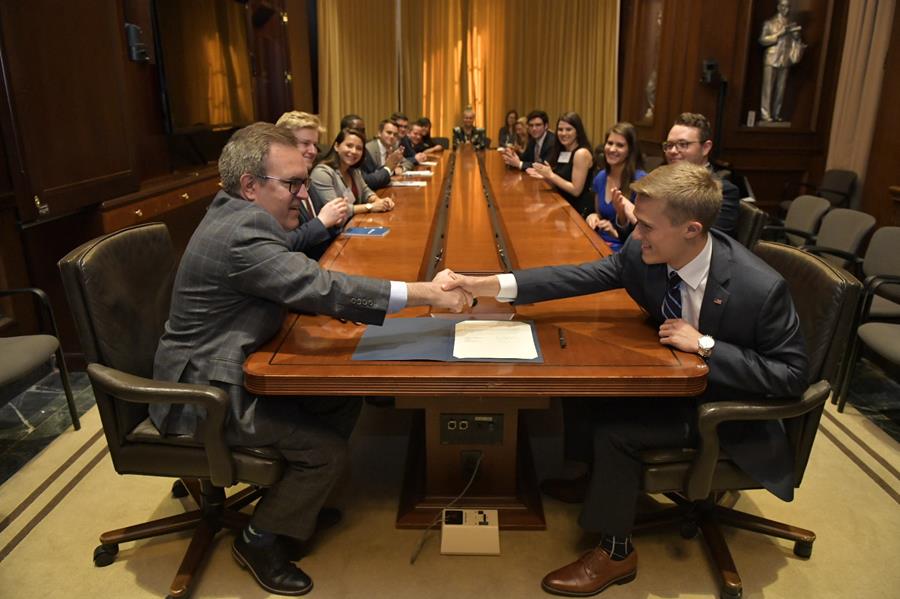
Federal Officials Announce Priority Actions Supporting
Long-Term Drought Resilience
WASHINGTON (July 31, 2019)- Today, senior administration officials participated in the Second National Drought Forum where they announced Priority Actions Supporting Long-Term Drought Resilience. This document outlines key ways in which federal agencies support state, tribal and local efforts to protect the security of our food supply, the integrity of critical infrastructure, the resilience of our economy, and the health and safety of our people and ecosystems.
The document was developed by the National Drought Resilience Partnership (NDRP), a federal collaborative formed to promote long-term drought resilience nationwide. While authority lies with the states to manage water resources, federal agencies play a key role in supporting states, tribes, communities, agriculture, industry, and the private sector owners and operators of critical national infrastructure to prepare for, mitigate against, respond to, and recover from drought.
The following statements were released after today's panel:
"We know we can accomplish more when we work together, and the National Drought Resilience Partnership facilitates collaboration among federal partners to help the country respond to drought and to prepare for the future," said U.S. Department of Agriculture Under Secretary for Farm Production and Conservation Bill Northey. "These priorities are a large part of our game plan to how we can protect our food and water supply, and to build resilience on our farms and ranches and in our communities and businesses."
"Under the leadership of President Trump, we are taking unprecedented steps at the federal level to coordinate and empower states, tribes, local communities, and water users to promote drought preparedness and resiliency and ensure reliable water supply throughout the West. The U.S. Geological Survey and Bureau of Reclamation play integral parts in this, whether it's the science or infrastructure piece of this equation," said U.S. Department of the Interior Assistant Secretary for Water and Science Dr. Tim Petty.
"The impact of drought on public health and the environment is far reaching because it reduces both water quantity and water quality," said U.S. Environmental Protection Agency Assistant Administrator for Water David Ross. "Through EPA initiatives, such as the National Water Reuse Action Plan, we are working to ensure a sufficient supply of clean water for the American people."
"Water quality and availability is a national issue and it is one that affects every American. Through this partnership, the data produced by the U.S. Geological Survey will be integrated into a comprehensive framework of information sharing that is flexible and responsive to the nation's decision-makers, ensuring every community understands drought preparedness, mitigation, and resiliency," said U.S. Geological Survey Director James Reilly.
"The National Drought Resilience Partnership is essential to the continued collaboration amongst federal agencies regarding the nation's water resources. I am committed to this partnership and will ensure the Corps' support to other agencies as they work drought-related issues and coordinate to reduce duplicative and redundant efforts," said U.S. Department of Army Assistant Secretary of the Army for Civil Works Ricky "R.D." James.
"The National Drought Resilience Partnership is inspiring action across the federal government. DOE is pleased to collaborate with other agencies to stimulate American innovation and technology solutions that address drought resilience through the Water Security Grand Challenge and other activities," said U.S. Department of Energy Assistant Secretary for Energy Efficiency and Renewable Energy Daniel Simmons.
"The Western states have experienced intense drought with the potential to severely impact agriculture, municipal water supplies and hydropower production. We've demonstrated that infrastructure investments, innovative approaches to conservation, and collaboration build drought resiliency and reduces risks," said Bureau of Reclamation Commissioner Brenda Burman.
The NDRP and the document released today focus on fostering a national dialogue about how federal agencies can support these entities in building a more drought-resilient nation for sufficient water quality and quantity and a vibrant economy at the local level. NDRP categorizes its drought resilience efforts along six goal areas, which provide a framework to systematically address how the federal government supports building long-term drought resilience:
- Data Collection and Integration
- Communicating Drought Risk to Critical Infrastructure
- Drought Planning and Capacity Building
- Coordination of Drought Activity
- Market-based Approaches for Infrastructure and Efficiency
- Innovative Water Use, Efficiency, and Technology
Background
Established in 2016, the NDRP is comprised of federal agencies that work together to leverage technical and financial federal resources, strengthen communication, and foster collaboration among its members to productively support state, tribal, and local efforts to build, protect, and sustain drought resilience capacity at regional and basin scales.
The NDRP co-chairs are the Department of Agriculture and Environmental Protection Agency. The additional interagency NDRP Member Agencies and offices include the Department of Defense; the Department of the Interior (DOI); the Department of Commerce; the Department of Energy; the Department of Homeland Security (DHS); the Office of the Assistant Secretary of the Army for Civil Works; the Office of Management and Budget; the Office of Science and Technology Policy; the National Economic Council; the Council on Environmental Quality; the National Security Council staff; and such other agencies or offices as the agencies set forth above, by consensus, deem appropriate. Currently, other offices include: the Office of Water Prediction, the National Weather Service, the National Oceanic and Atmospheric Administration, the National Integrated Drought Information System, which all are within the Department of Commerce; the Bureau of Reclamation and the United States Geological Survey, within the DOI; National Aeronautics and Space Administration; DHS Cybersecurity and Infrastructure Security Agency – National Risk Management Center; the Centers for Disease Control; and the Federal Emergency Management Agency. Member agencies collaborate to ensure successful outcomes with maximum efficiency and minimal duplication.

U.S. Environmental Protection Agency Assistant Administrator for Water David Ross and senior administration officials participate in a panel discussion at the Second National Drought Forum.
US EPA, Office of Public Engagement, 1200 Pennsylvania Avenue NW, Washington, DC 20460 United States


